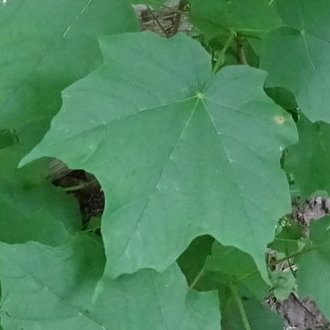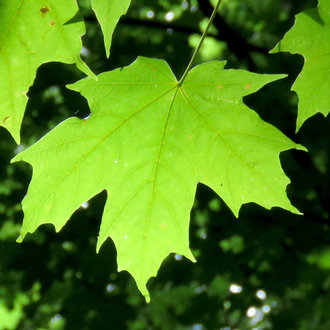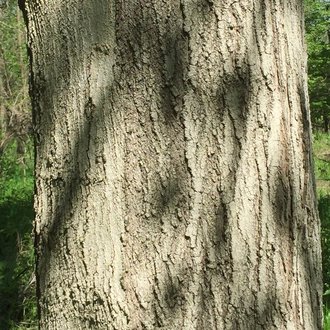Sugar Maple vs Black Maple
Sugar maple and black maple are difficult to distinguish and were once considered varieties of the same species. They are also able to hybridize and form intergrades, so not all individuals will be able to be identified as one or the other. Many trees, however, can be definitively identified by characteristics of their leaves. Both species, as well as hybrids and intergrades of unknown origin, are used in landscaping, so escaped landscaping plants may have characteristics of either or both species. The bark of both species is variable and irregular but there are some patterns that can be a clue to aid ID.
Sugar Maple (Acer saccharum) | Black Maple (Acer nigrum) |
A shade-tolerant deciduous tree of the northeast, often associated with climax communities on rich, mesic sites. | A tree native to eastern North America, closely related to, but less common than the sugar maple. |
Although leaf margins may be pubescent, petioles (stems connecting the leaf to the twig) and undersides of leaves lack hairs. Photo © Katja Schulz, CC BY 4.0. | Petioles (stems connecting the leaf to the twig) and undersides of leaves are pubescent. Photo © Nate Martineau, CC BY 4.0. |
Lobes at the base of each leaf usually do not overlap. Photo © Yann Kemper, Public Domain. | Lobes at the base of each leaf often overlap. Photo © Reuven Martin, Public Domain. |
Deep sinuses between lobes, often leading the front lobe to be wider at the tip than the base. Lobes have multiple long points, leading to 7 or often far more long points on the leaf as a whole. Each lobe may have as many as 5 points. Photo © Katja Schulz, CC BY 4.0. | Shallow sinuses between lobes, leading the front lobe to be much wider at the base than the tip. Three lobes have one long point each, but other points are subtle. Each lobe usually has at most 3 points. Photo © Scott Sampson, CC BY 4.0. |
Fewer, but often wider vertical ridges and furrows, when comparing trees of similar diameter. Photo © Alexis Williams, CC BY 4.0. | More numerous, narrower vertical ridges and furrows. Photo © askalotl, Public Domain. |
Although young leaves often droop at margins, mature leaves are usually flat and less likely to droop. Photo © Christopher Eliot, CC BY 4.0. | Mature leaves often drooping, especially at margins, giving them a claw-like appearance. Photo © Reuven Martin, Public Domain. |
References & External Resources
These short lists show only links helpful for ID. For a complete list of references and resources also covering other aspects of ecology, visit the links section of the full article on each plant, which is the first entry here.












